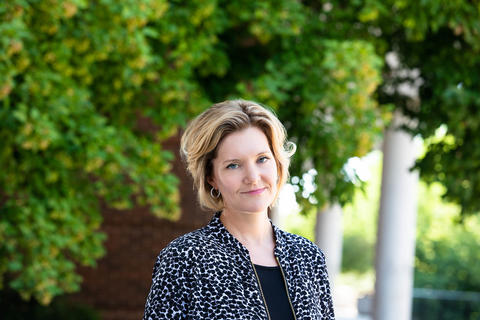
Economic Anxiety and COVID-19
Tuesday, November 17, 2020
Once the reality of the COVID-19 pandemic became clear, apprehension emerged as a dominant emotion for many Americans. Activities we long took for granted—grocery shopping, dining out, gym workouts—were suddenly tinged with uncertainty and even dread. That was unsettling. But the economic impacts that quickly followed were devastating. The stock market set a new record for a single-day plunge. Companies started mass layoffs and furloughs. And government mandates forced businesses deemed non-essential to shut down.
To borrow a now well-worn phrase, anxiety became the new normal, particularly when it came to individual finances. It’s not hard to see why. Staying calm is a challenge when you don’t if you’ll be laid off, if your company will survive, or if you can afford groceries.
Has the economic anxiety been worse for some individuals and groups more than others? That’s the central question Carlson School Professor Kathleen Vohs and colleagues explored in some recent research. The short answer: Yes. But the authors also discovered, other factors—individual personality traits, degrees of social connectedness, openness to experience, and more— helped determine who felt the most apprehension.
Vohs and College of Liberal Arts Professors Frank Mann and Robert Krueger used a sample of more than 500 people from around the U.S. for the study. One key finding: Younger adults and families with children living at home reported the highest levels of anxiety. That’s not necessarily surprising, given the often-tenuous financial situations of many people in those groups. It’s normal to assume a 20-something working to pay off a heavy student debt load or a family with multiple young children would worry about a looming job loss—not to mention the difficulties of finding a new one in a suddenly unstable business environment.
As Vohs dug deeper into the research, however, other characteristics emerged. People who self identified as neurotic or who had a perceived vulnerability to disease reported heightened unease. The same goes for individuals with low self-esteem, low conscientiousness, and a lack of openness to new experiences. Perhaps no major surprise there. But people whose social needs rely heavily on collective assembly—churches, clubs, and the like—also reported elevated levels of financial stress. While that might seem like an unusual correlation, the research points out that abruptly removing the sense of belonging people get from group gatherings could trigger feelings of a larger-scale societal breakdown—something that would almost certainly include serious economic upheaval.
And what about the people who were less concerned about the pandemic’s economic impact? The authors found that approximately 15 percent of adults had no anxiety at all, and 10 percent reported they were only “somewhat concerned” about a single financial hardship. Income played a key role with that individuals who made more than $75,000 per year were generally less anxious than people who earned less.
One final note: this research was published in July 2020, when the pandemic was still in its relatively early stages. With that in mind, she explains that it represents a snapshot in time, one that documents the impact of a still-emerging and rapidly shifting situation. Later research could well produce different findings, although it’s hard to see that happening. While the stock market has mostly recovered, job losses and unemployment claims continue and uncertainty continues to rule. In short, it’s safe to assume that economic anxiety—like COVID-19 itself—will persist as we near 2021.
